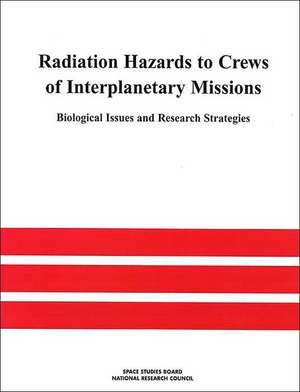Radiation Hazards to Crews of Interplanetary Missions
Autor National Research Council, Division on Engineering and Physical Sciences, Space Studies Board, Commission on Physical Sciences Mathematics and Applications, Task Group on the Biological Effects of Space Radiationen Limba Engleză Paperback – 27 mar 1997
The knowledge base needed to design shielding involves two sets of factors, each with quantitative uncertainty the radiation spectra and doses present behind different types of shielding, and the effects of the doses on relevant biological systems. It is only prudent to design shielding that will protect the crew of spacecraft exposed to predicted high, but uncertain, levels of radiation and biological effects. Because of the uncertainties regarding the degree and type of radiation protection needed, a requirement for shielding to protect against large deleterious, but uncertain, biological effects may be imposed, which in turn could result in an unacceptable cost to a mission. It therefore is of interest to reduce these uncertainties in biological effects and shielding requirements for reasons of mission feasibility, safety, and cost.
Preț: 262.04 lei
Nou
Puncte Express: 393
Preț estimativ în valută:
50.14€ • 52.49$ • 41.49£
50.14€ • 52.49$ • 41.49£
Carte tipărită la comandă
Livrare economică 08-22 aprilie
Preluare comenzi: 021 569.72.76
Specificații
ISBN-13: 9780309056984
ISBN-10: 0309056985
Pagini: 88
Dimensiuni: 216 x 280 mm
Editura: National Academies Press
ISBN-10: 0309056985
Pagini: 88
Dimensiuni: 216 x 280 mm
Editura: National Academies Press
